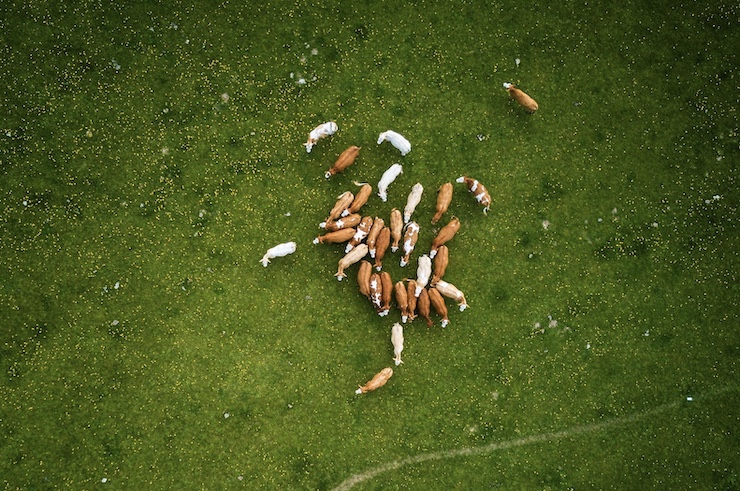
Drones play an important role on many U.S. farms and more farms than ever are using them heavily, research shows. For example, a survey conducted in 2018 found that more than four-fifths of all US farms with drones deployed them at least once a week; almost a third used them daily. What tasks did they perform? Not just the obvious ones – seed planting and crop dusting. On smaller farms especially (those 350 acres or less) drones are also playing a vital role managing the owner’s precious livestock, the survey found.
Many farm owners are looking for ways to monitor and herd their larger farm animals, especially horses, cows and sheep. Cattle farmers in Australia, for example, found that one person tapping his thumbs on a small drone console can do the herding job three or more people riding quad vehicles or on horseback formerly did. Using drones also reduces the farm’s fuel and vehicle maintenance costs as well as the wear and tear on its horses. The job also doesn’t take quite so long.
Some drone companies have gone so far as to equip their herding drones with loudspeakers that emit the sounds of barking dogs to mimic the presence of sheepdogs. Research shows that virtual dog barking, coupled with the intimidating presence of low-flying drone vehicles, is just as effective – and much cheaper– than using live sheepdogs. On large farms drones can be used to track down and rein in roaming livestock and to readily identify those suffering injury or disease. Using thermal imaging, drones can also monitor farm animal movements at night and identify and deter would-be predators.
While the overall quality of farm livestock management improves with drones, drone operators also need to be careful not to deploy their unmanned aerial vehicles too close to some animals that might become spooked by their presence and overreact, causing damage to themselves and to farm infrastructure.
For example, unlike sheep, high-strung horses are known to panic and get injured when panicking and fleeing sudden loud noises and intrusions. Low-flying drones can also kick up dust and twigs that startle smaller farm animals, especially young foals and calves. And in the worst case scenarios, drones can run out of power, crash or even collide with livestock, causing trauma, injury and even death.
Drones, as a rule, should fly at least 100 feet overhead any horses they track, research suggests. By contrast, adult cows, which tend to be less susceptible to overreacting to the presence of drones, might be monitored more closely. Farms that use drones to spray their crops have realized enormous cost savings. By identifying and tracking specific areas vulnerable to pest infestations, drones can economize on pesticide use.
Another rising drone function is farm mapping. The images produced by multi-spectral drones are as accurate as those produced by measuring farmland by foot, research shows. Collecting data can aid a variety of management issues, including irrigation management. In addition crop insurers have begun relying on drone maps to investigate insurance claims, reducing the costs of investigation as well as eliminating the potential of injury to field inspectors.
What other functions can drones perform? One of the most simple and effective is plant pollination. Flying drones equipped with large rotor blades low over crops can fertilize a farm’s entire field in a matter of minutes.
|